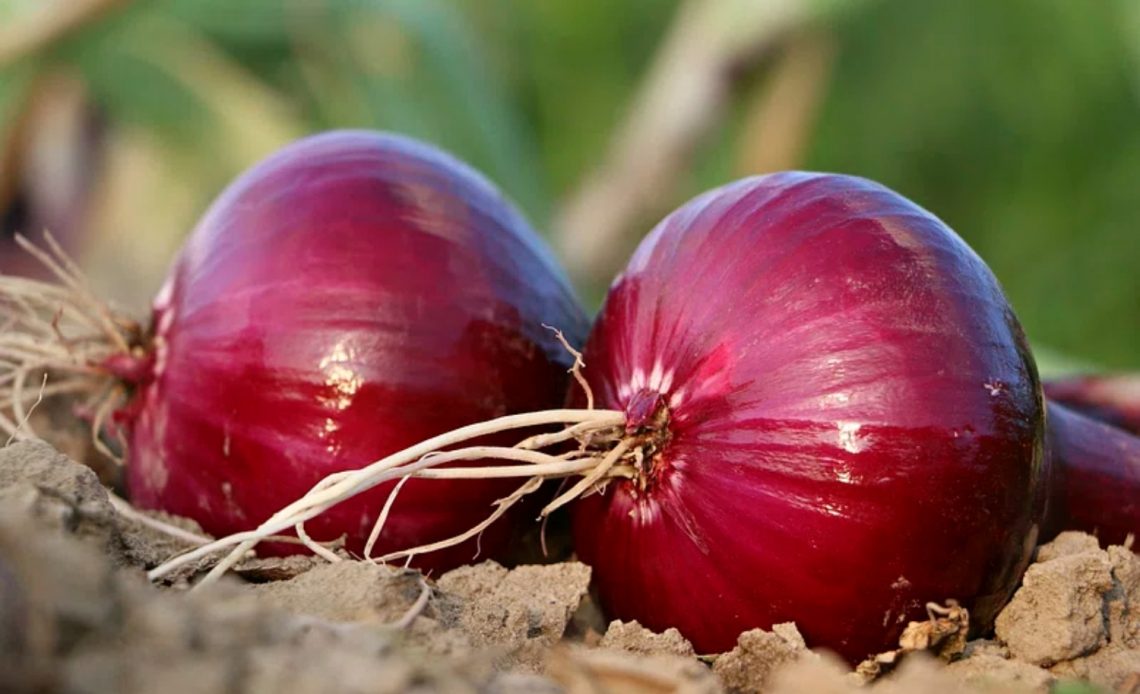

We’re here to help! Wild Yards is a completely free website that is 100% dedicated to helping you create a wildlife-friendly, sustainable yard. Read more
WildYards is reader-supported. When you buy a product through a link on our site, we may earn a comission. Every product is independently selected by our (obsessive) editors and our reviews are unbiased and objective. Read more about our mission or our privacy policy.
Crisp and juicy, red onions are a delicious addition to salsas, burgers, sandwiches, fresh salads, and more — and homegrown red onions are even better than storebought.
Red onions are a superfood. Rich in anthocyanins, which give these onions their deep burgundy color, red onions are an excellent source of health-boosting antioxidants.
Red onions are also easy to grow, thriving in full sun when planted in moist yet well-draining soil that’s rich in decaying organic materials like compost.
But even though red onions are easy to grow, they can take quite a while to fully develop.
If you’re chomping at the bit waiting for the day your red onions are finally ready, you may be wondering what signs to look for.
So how can you tell when to harvest red onions so you can finally enjoy the fruits of your labor?
Red onions are ready to be harvested when the tops turn yellow and fall over, usually 3 to 4 months after planting.
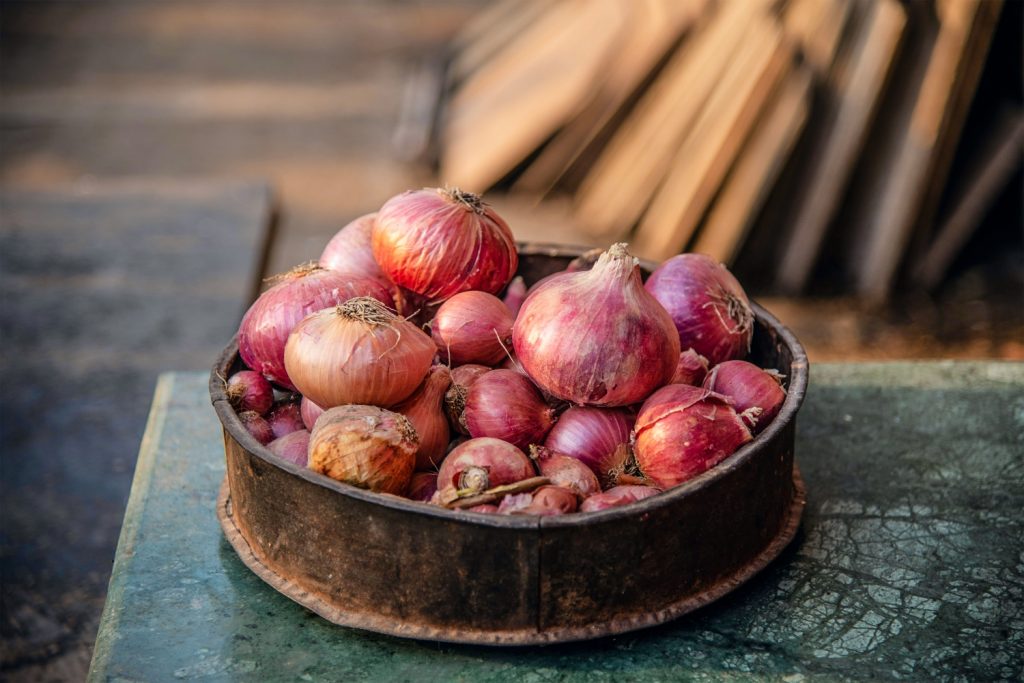
When should you plant red onions?
Like white and yellow onions, red onions can be started in late fall or early spring.
You can start your red onion crop from seeds, bulbs, or sets. We recommend starting your onion crop from bulbs and/or sets, as they mature much more quickly.
Red onion seeds take 1 to 2 years before they’re ready to be harvested. Onions are biennials, and it takes 2 years for them to complete their lifecycle.
Unlike seeds, bulbs and sets already have significant growth before being planted, so they mature much more quickly. Usually, 3 to 4 months after planting.
If you live in a mild climate where the temperatures stay above freezing, you can plant your red onion bulbs in the fall.
You may need to use some type of organic mulch, like straw or husks, to insulate the growing bulbs and protect them from frosts.
For spring gardens, plant your red onion sets in late spring to early summer.
Although onions enjoy full sun, if your growing zone gets especially hot (think 90 degrees Fahrenheit and up), you may need to give your red onions some afternoon shade.
What are the best red onion varieties to plant?
Compared to white and yellow onions, red onions are sweeter, crisper, and juicier. Which red onion variety is best is entirely a matter of personal opinion.
But if you’re new to growing red onions, some cultivars are easier to grow than others.
Red Creole onions are relatively adaptable to a variety of climates and their easy-going nature makes them more low-maintenance than other varieties. These onions are mild and slightly sweet.
Red Zeppelin onions are large and globe-shaped and ideal for growing in containers, while Red Baron onions mature rapidly and are disease-resistant.
Other great red onion cultivars for beginner gardeners include Hyred, which is resistant to bolting, Italian Torpedo, which has an interesting elongated shape, and Southport Red Globe, which is ideal for gardens in cooler growing zones.
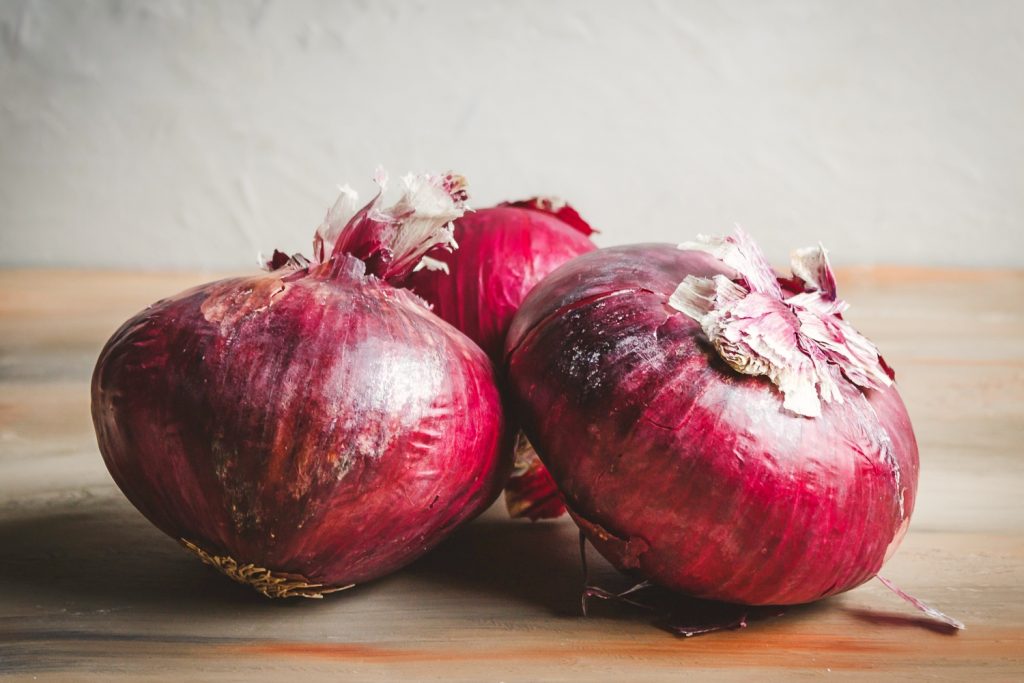
What’s the difference between long-day and short-day onions?
Knowing whether you’re growing long-day onions or short-day onions will also help you determine when to harvest red onions.
Although some onions are day-neutral, many onions grow in response to light.
Short-day onions begin to bulb up when there are 11 to 12 hours of daylight.
Long-day onions, on the other hand, require a minimum of 14 hours of daylight to mature properly.
If you want to harvest your red onions at the right time, you’ll need to choose the correct type for your garden.
Generally speaking, long-day onions are the best choice for gardens in the Northern United States, and short-day onions grow best in gardens in the Southern United States.
Choosing the right cultivar for your vegetable patch will help you better determine when to harvest your red onion crop.
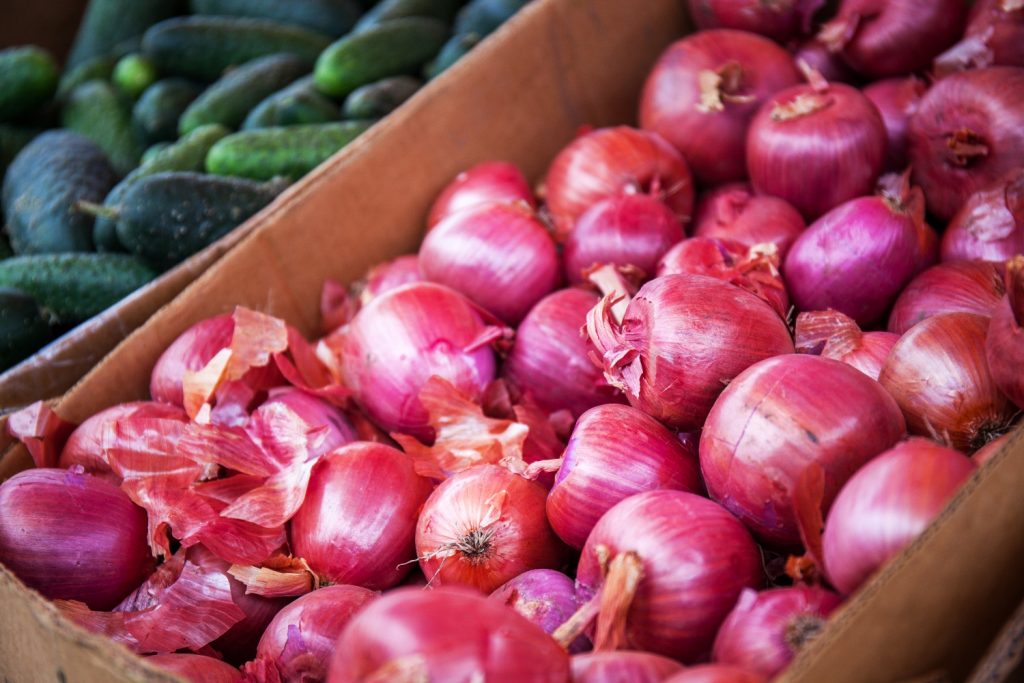
How can you tell when to harvest red onions?
It’s not hard to tell when red onions are ready to be harvested. The plants will let you know when they’re ready.
Like yellow and white onions, the stems of red onions will turn yellow and brown and fall over when the bulbs have matured.
Once the necks have snapped and are laying flat, it’s safe to dig the red onions up.
Although onions grown from seeds can take up to 2 years to mature, onions grown from sets and bulbs typically mature in 3 to 4 months.
Of course, this timeline can vary slightly depending on environmental factors.
If you’ve been careful to meet all of your red onion crop’s growing requirements, then the onions should be ready right on time. They’ll also be of a decent size, measuring anywhere from 2 to 4 inches in diameter.
Smaller onions tend to be more flavorful than larger onions, but that’s not always the case.
Since onions tend to push their way to the soil’s surface as they grow, you can get a pretty good idea of how big the onions are before picking them.
It’s worth noting that size alone is not necessarily an indicator of whether or not an onion is ready to be harvested.
Only once the stalk has started to die back is the onion ready to be dug up.
Red onions planted in spring to early summer are ready to be harvested in late summer to early fall. And red onions planted in the fall are ready to be harvested in spring.
How to harvest red onions
Harvesting onions is easy. If you’re sure your red onions are ready to be dug up, then grab a hand trowel and get to work!
Take the onion by the stalk and gently wriggle it around. Using your trowel, dig around the bulb being careful not to pierce the onion itself. You may need to cut the roots to loosen the onion.
Holding the very base of the stalk, pry the onion up from the ground, then shake off the excess dirt.
Be sure to fill in the hole the onion bulb leaves behind. Because red onions use up a ton of nitrogen, you’ll need to amend the plot with a high-nitrogen fertilizer, like blood meal, when you’re done to prep the beds for planting next season.
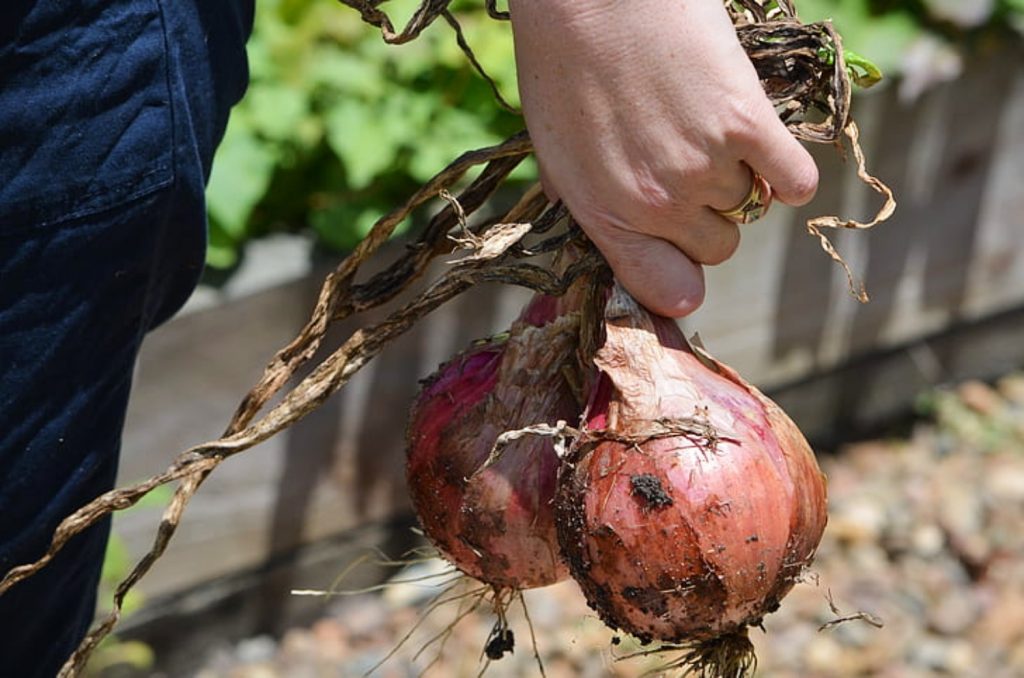
What should you do if your red onions start making flowers?
Occasionally, red onions will bolt. Bolting is when a plant produces a long flower stalk. Onions may bolt for a variety of reasons, including exposure to cold temperatures and planting sets that are too large.
When plants bolt, they begin diverting nutrients to the flower and the fruits and seeds that will soon follow.
Because the new bloom takes valuable vitamins and minerals away from the root of the plant, this greatly affects the taste, texture, and quality of the red onions.
If you notice any of your red onions bolting, dig them up immediately and either use them in your cooking or chop them up and freeze them.
Onions that have bolted don’t last as long as onions that have been allowed to mature fully. Bolted onions should be used within 3 days.
Harvesting bolting onions as soon as you notice their flowers will help preserve their flavor. And freezing what you can’t use right away will prolong their stunted shelf life.
How to cure red onions
Your red onions are ready to be eaten the moment they come up from the ground. But if you planted a large crop, you’ll probably want to store some of the onions for later. You can do this by curing the onions.
Careful to leave the tops attached, lay the red onions out in a cool, dry place out of direct sunlight. Be sure to leave some space in between the onions to ensure good air circulation.
Once the onions are placed, leave them to cure for 10 to 14 days.
When they’re ready, the necks will dry out and the roots will wither away. The outer layer of the onion will become papery, just like the onions at the grocery store.
At this point, you can remove the tops from the onions and store them in a mesh bag in a cool, dry place.
Alternatively, you can slice and dice the onions and store them in the fridge or freezer.
Frozen onions can last for up to a year, but refrigerated onions should be used within 7 days.
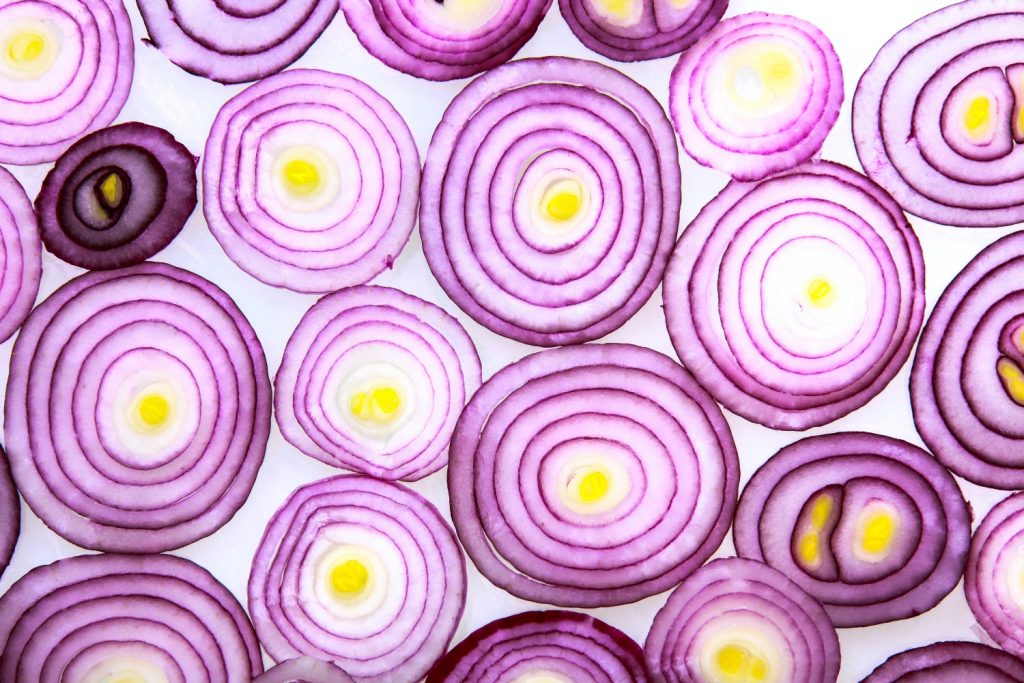
Tips for growing great red onions
If you want to grow delicious red onions, start by choosing quality bulbs, sets, or seeds. Order the onions from a reputable seed catalog, and avoid purchasing them from local hardware and feed stores, as the onions sold at these types of establishments are typically substandard and not cared for properly.
Next, be sure to amend your garden beds with plenty of organic matter. Red onions love nitrogen-rich fertilizers, like manure, but they also benefit from small doses of high-phosphorus fertilizers and high-potassium fertilizers.
Once planted, spread a layer of mulch around the onion plants to help the soil retain moisture. The soil should be watered regularly to keep it uniformly damp to the touch.
But be careful not to overwater your onion crop. Onions are susceptible to rot, especially if they’re left sitting in boggy soil for long periods.
By choosing the right cultivar for your garden, and making the necessary preparations, you can ensure your red onion crop matures properly and is ready to be harvested as fast as possible.
